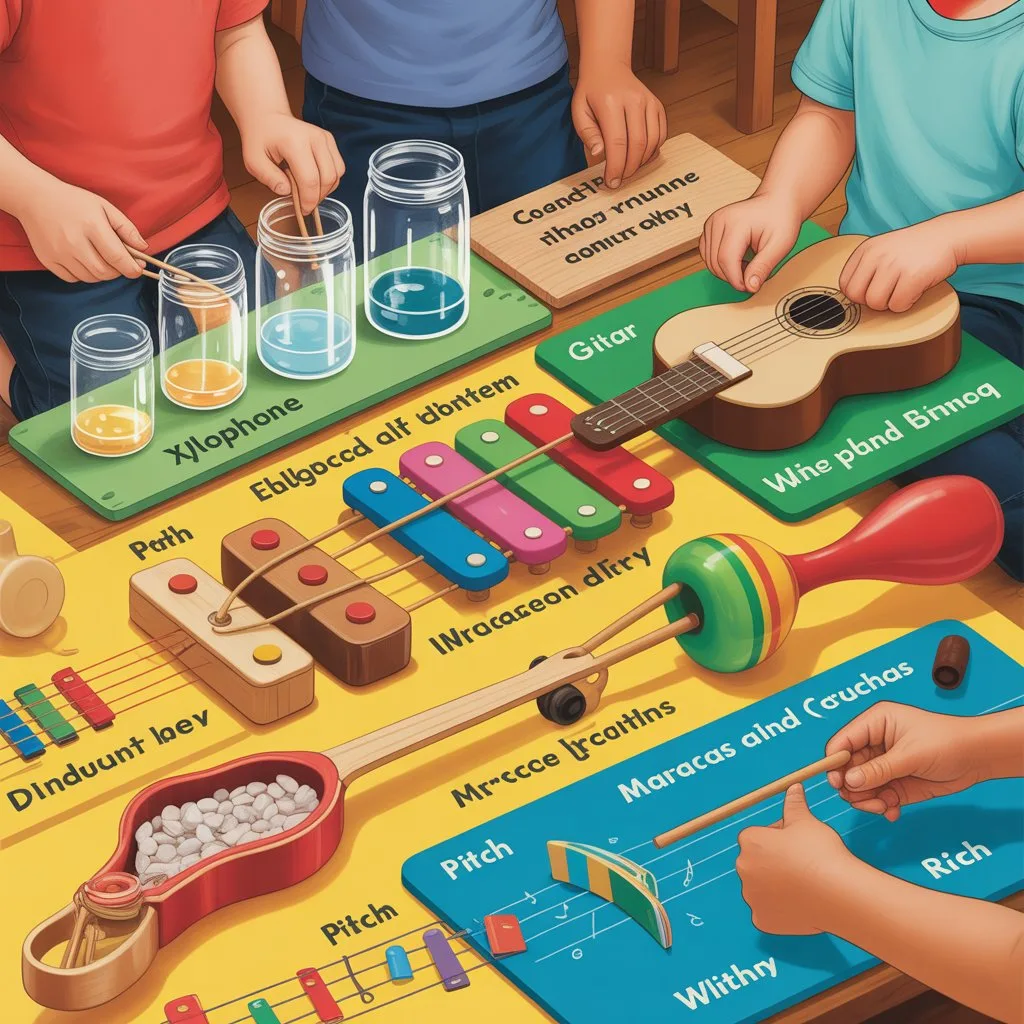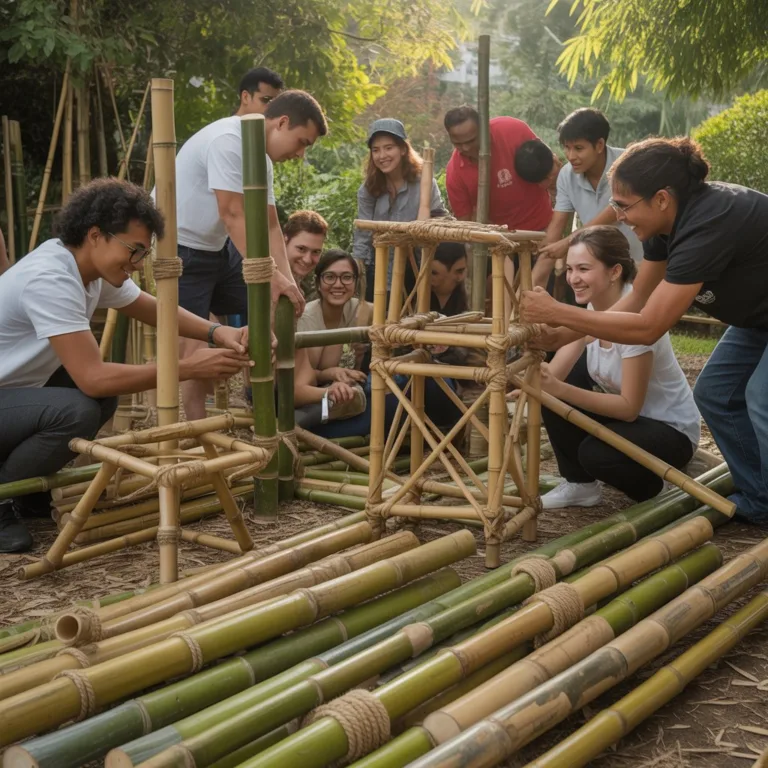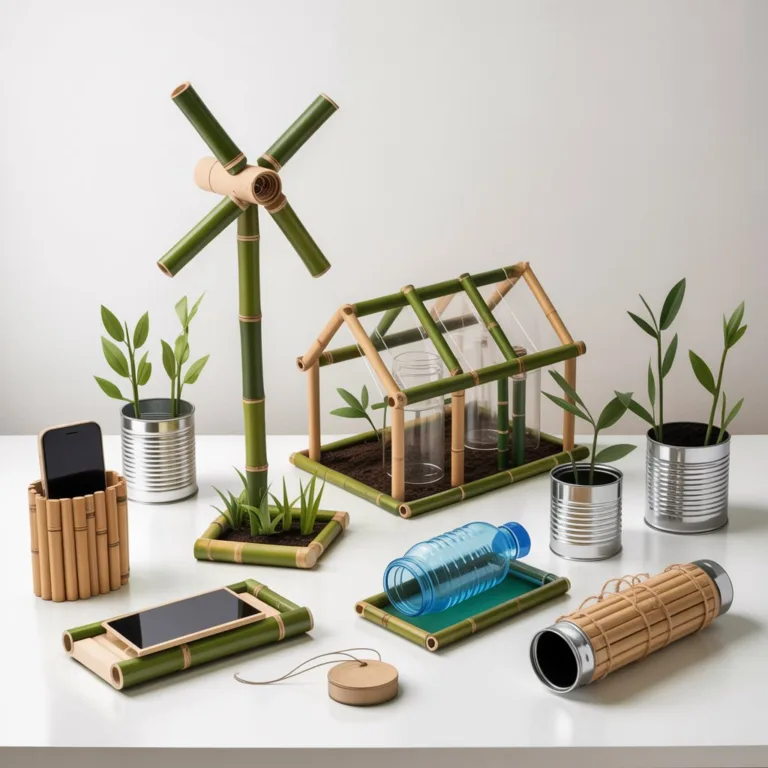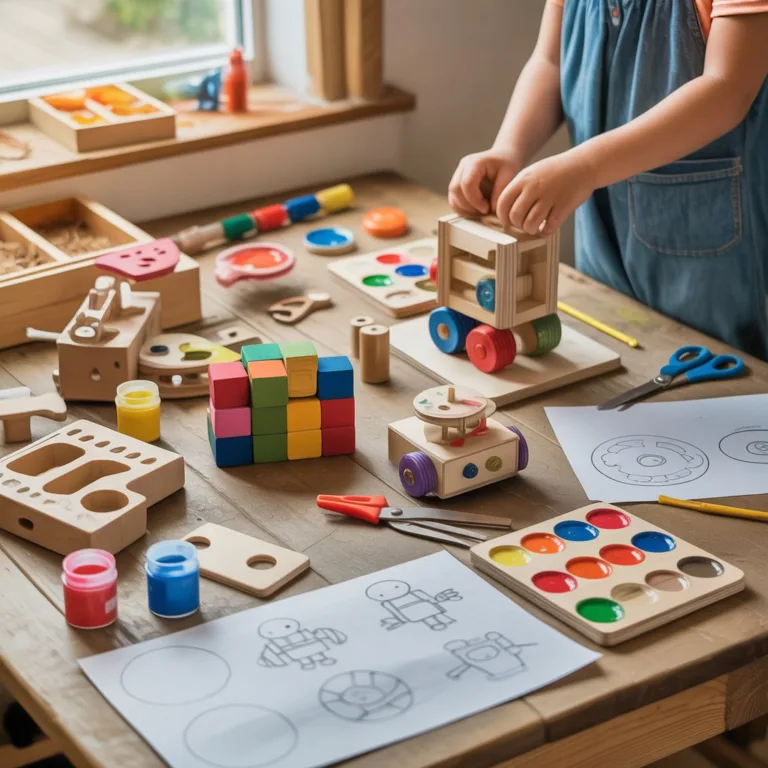Creating music has always been a universal way to express creativity, emotion, and connection. Yet beyond entertainment, music also plays a powerful role in learning and cognitive development. When combined with the world of crafts and hands-on making, this becomes an even more enriching experience. Making DIY musical toys is not only a sustainable and budget-friendly activity, but also a deeply educational one — especially for children. It brings together science, art, and creativity in a way that encourages problem-solving, motor skills, and sensory awareness.

The Magic of Sound and Play
Sound is one of the first sensory experiences humans have. From the rhythmic heartbeat heard in the womb to the songs that calm or energize us, rhythm and tone shape how we perceive the world. DIY musical toys tap into this instinctive connection by allowing makers to explore the fundamentals of sound creation — vibration, resonance, and rhythm — through tangible, playful experiences.
Children, in particular, benefit greatly from sound-based exploration. Simple objects such as rubber bands, jars, and cardboard tubes can become instruments that demonstrate how sound waves travel through air or surfaces. For adults, these same projects can be a reminder of how accessible creativity and science can be, even without expensive tools or materials.
Why DIY Musical Toys Support Learning
1. Cognitive Development
When children build and play with homemade instruments, they engage multiple areas of the brain simultaneously. Creating sounds requires attention, prediction, and pattern recognition. A simple drum or shaker can help strengthen memory and sequencing — the same cognitive skills needed for reading and mathematics.
2. Motor Skills and Coordination
Building a musical toy involves fine motor actions like cutting, gluing, and assembling. Playing it afterward adds rhythmic movement that develops hand-eye coordination. Activities such as shaking, tapping, or strumming foster both gross and fine motor control, essential for writing and other manual tasks.
3. Sensory Awareness
Sound-based play heightens sensory learning. Children become more aware of pitch, volume, and vibration. They learn how changing the size or material of a container can alter the tone or resonance of a sound, making them early experimenters in physics.
4. Creativity and Expression
Unlike factory-made toys, DIY instruments have no preset buttons or sounds. Each creation is unique. Makers can decorate and customize their instruments, adding personal meaning to their work. This promotes self-expression and encourages children to take pride in what they build and play.
5. Emotional Regulation
Music has a soothing and grounding effect. Playing or listening to rhythmic sounds can help regulate emotions and promote calmness. When children craft and play their own musical toys, they combine mindfulness, creativity, and play therapy into one harmonious experience.
Simple and Educational DIY Musical Toy Ideas
Shakers from Recycled Materials
A shaker is one of the easiest and most satisfying instruments to create. Reusing materials such as plastic bottles, cardboard tubes, or metal tins helps reduce waste while producing fun percussion sounds. Filling them with rice, beans, or seeds introduces texture and sound variation. Experimenting with fill amounts teaches lessons about mass and resonance.
Rubber Band Guitars
Stretching rubber bands of different thicknesses around a tissue box creates a simple string instrument. The tension, length, and material of each band affect pitch and tone — a hands-on way to explore physics. Painting or decorating the box adds an artistic element, blending science with creativity.
Bottle Flute or Xylophone
Glass or plastic bottles filled with varying amounts of water can create a scale when tapped or blown across. Children can visually observe how water level changes sound pitch, connecting physical change to auditory results. This project also enhances patience and precision, as small adjustments make noticeable differences in sound.
Drum from Containers and Balloons
Stretching a balloon over the opening of a cup or tin can transforms it into a small drum. The tension of the balloon and the size of the container determine the tone. Kids can experiment with multiple drums to create a set, exploring concepts of rhythm and tempo.
Rain Sticks and Sound Tubes
Using cardboard tubes filled with small objects like rice, sand, or lentils, and sealing both ends, creates a gentle rain-like sound when tilted. Adding internal obstacles, like small sticks or rolled paper, slows the fall and enriches the texture of the sound. This activity connects sensory play with cultural awareness, as rain sticks have roots in indigenous musical traditions.
Connecting Sustainability and Learning
DIY musical toys also provide an excellent opportunity to teach sustainability. Most instruments can be made using recycled or natural materials — items that would otherwise be discarded. Encouraging children to collect, clean, and repurpose materials cultivates environmental responsibility.
For example, using cardboard tubes from paper towels, bottle caps, and glass jars shows that music can come from almost anything. This teaches the principle of upcycling — turning waste into something of new value — while fostering an appreciation for resourcefulness.
Educators and parents can extend this learning by discussing how indigenous and folk instruments often arose from locally available materials. Bamboo flutes, clay drums, and gourd rattles are all examples of sustainable design rooted in cultural tradition.
Incorporating DIY Instruments in Education
Teachers can use DIY musical toys as part of a larger interdisciplinary curriculum. Music connects naturally to subjects like science, math, and art. Here’s how educators can integrate these projects effectively:
- Science: Explore sound waves, vibration, and resonance through practical experimentation.
- Math: Measure materials, count beats, and analyze rhythm patterns to teach sequencing and fractions.
- Art: Decorate instruments using color, shape, and texture to enhance self-expression.
- Social Studies: Study traditional instruments from around the world to connect cultural heritage and craftsmanship.
- Language Development: Encourage children to describe the sounds they hear and create stories inspired by their instruments.
The process of creating and discussing instruments encourages collaboration, listening, and communication — vital life skills beyond the classroom.
A Mindful Approach to Music and Making
One of the most profound aspects of DIY musical toy creation is how it cultivates mindfulness. The process demands attention to detail — from choosing materials to adjusting sounds. It requires patience and focus, helping children and adults alike slow down in an increasingly fast-paced world.
Engaging in mindful making also nurtures a sense of accomplishment and joy. Each sound becomes a small reward, each rhythm a moment of creative release. Whether used for play, relaxation, or education, handmade musical toys can transform ordinary objects into instruments of discovery.
Inspiring Group and Community Projects
Beyond individual crafting, these musical toys make for excellent community or classroom projects. Group workshops can encourage teamwork and shared creativity. Participants can form mini “bands” using their instruments, performing for family or community events.
These experiences build confidence and connection. When children see that their handmade creations can produce music collectively, it reinforces cooperation and mutual respect. Such projects are also ideal for environmental awareness events, art fairs, or sustainability workshops.
Encouraging Long-Term Creativity
DIY musical toys are more than just crafts — they are stepping stones toward lifelong creative exploration. Once children grasp the basics of sound and construction, they can move on to designing more complex instruments or experimenting with digital sound recording.
The act of creating with purpose — turning scraps into art — helps develop innovative thinking. It shows that creativity is not bound by access to expensive tools or materials, but by imagination and curiosity.
The Lasting Harmony Between Learning and Play
Music, play, and learning are all interconnected. Through DIY musical toys, these elements blend seamlessly, offering a hands-on approach to creativity and sustainability. Each handmade instrument tells a story — one of curiosity, discovery, and joy.
Encouraging children and adults alike to explore the educational value of making music from simple materials helps nurture a deeper connection to both art and the environment. Every sound, every vibration, becomes a reminder that learning can be as natural and joyful as the music we create.

Elena Mora is a creative educator and eco-craft enthusiast who specializes in bamboo musical instruments and sustainable toys for children. She believes that hands-on learning through play teaches kids about creativity, music, and environmental responsibility.



